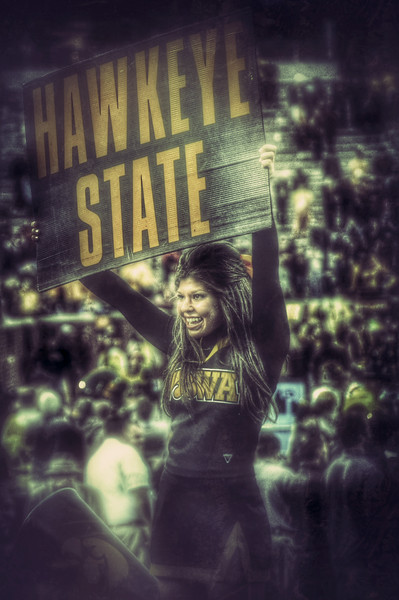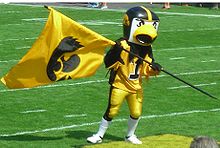Have you ever wondered how each B1G school got their name?
Rutgers Scarlet Knights
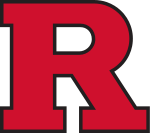
Rutgers was originally named Queen’s College in 1766. In 1825, the school was renamed Rutgers College after Colonel Henry Rutgers. Henry Rutgers was a New York City landowner, philanthropist and former military officer, whose $5,000 bond donation to the school allowed it to reopen after years of financial difficulty.
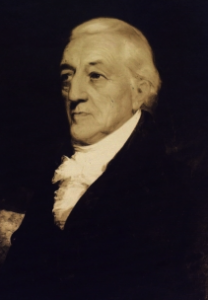
Rutgers is known for being the “Birthplace of College Football”, hosting the first ever intercollegiate football game on November 6, 1869. In 1925 the mascot became a Chanticleer, or a fighting rooster. The school was often made fun of because of their chicken mascot. In 1955, the mascot was changed to the Scarlet Knight after a campus-wide election, beating out other contenders such as “Queensmen”, the “Scarlet”, the “Red Lions”, the “Redmen” and the “Flying Dutchmen.”
Illinois Fighting Illini

The University of Illinois official team nickname is the Fighting Illini. The earliest reference of Illini appears to be mentioned in January 1874, when the campus weekly newspaper changed its name from The Student to The Illini. The term Fighing Illini was referenced in multiple newspapers and was first reported in 1911. The nickname was adopted by general consensus as an unofficial school nickname sometime between 1921–1930 and it eventually became the official nickname.
Wisconsin Badgers
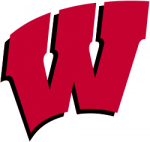
Wisconsin was dubbed the “Badger State” because of the lead miners who first settled there in the 1820s and 1830s. Without shelter in the winter, they had to “live like badgers” in tunnels burrowed into hillsides. The badger mascot was adopted by the University of Wisconsin in 1889. His name, “Buckingham U. Badger”, a.k.a. “Bucky Badger,” was chosen in a contest in 1949.
Minnesota Golden Gophers
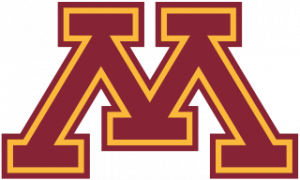
The University Mascot is derived from a nickname for the state of Minnesota, “The Gopher State.” The original design was based on the thirteen-lined ground squirrel. The state nickname derives from a political cartoon by R. O. Sweeny, published as a broadside in 1858. The nickname was associated with the university as early as the publication of the first yearbook in 1888, which was titled “The Gopher”. Other early yearbooks included depictions of gophers as well, and the University of Minnesota football coach Clarence Spears officially named the football team the Gophers in 1926. After the radio announcer Halsey Hall began referring to the team as the Golden Gophers due to the color of their uniforms, the team was renamed under coach Bernie Bierman.
Maryland Terrapins
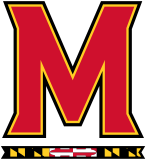
The nickname was coined in 1932 by Harry C. “Curley” Byrd, then the school’s football coach and later the school’s president. Previously, Maryland teams were known as the “Old Liners”—a reference to the state’s nickname, “The Old Line State.” However, the school newspaper, The Diamondback, wanted a better nickname. Byrd thought “Terrapins” was a good choice because of the diamondback terrapins endemic to the Chesapeake Bay region. Byrd’s hometown of Crisfield was famous for the number of terrapins along its shores. The school mascot is an anthropomorphic turtle named “Testudo.” The official team colors are red, white, black, and gold, derived from the Maryland state flag. It is the only NCAA school to have four official school colors.
Purdue Boilermakers

In 1889, Purdue played Wabash College in Crawfordsville, Indiana, and won the game 18-4. Students from the college and citizens of Crawfordsville began calling the Purdue players “a great big burly gang of corn-huskers”, “grangers”, “pumpkin-shuckers”, “railsplitters”, “blacksmiths,” “cornfield sailors”, and “foundry hands”. The Purdue students experienced hands-on education at the university, including the maintenance of a fully operational steam locomotive.
Purdue defeated Wabash College again in 1891, 44–0. An account of the game in the Crawfordsville Daily Argus News of October 26, 1891 was headlined, “Slaughter of Innocents: Wabash Snowed Completely Under by the Burly Boiler Makers from Purdue”. Purdue became known as the boilermakers the next year.
Several of the local schools added to the boilermaker tradition by suggesting that Purdue was going up the Wabash River and hiring workers from the nearby Monon railroad yards to play football. Purdue’s official mascot is a Locomotive, the Boilermaker Special. The Monon Railroad had its main locomotive shops in Lafayette, not far from campus.
Purdue’s athletic teams wear a combination of old-gold, black, and white, colors that have identified Purdue since 1887.
Indiana Hoosiers
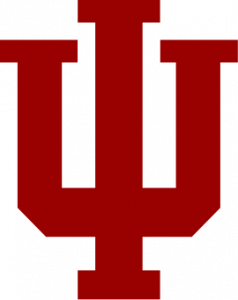
The school does not have a mascot, but student-athletes are known as “Hoosiers“, a nickname for natives or residents of Indiana. A bulldog named Ox served as the football team’s mascot from 1959–1965. Indiana had a bison as its mascot in the late 1960s and introduced a mascot named “Hoosier Pride” in 1979. But that mascot didn’t go over well with fans and was quickly abandoned.
Northwestern Wildcats

Northwestern’s athletic teams are nicknamed the Wildcats. Before 1924, they were known as “The Purple” and unofficially as “The Fighting Methodists.” The name Wildcats was bestowed upon the university in 1924 by Wallace Abbey, a writer for the Chicago Daily Tribune who wrote that even in a loss to the University of Chicago, “Football players had not come down from Evanston; wildcats would be a name better suited to Coach Glenn Thistletwaite’s boys.” The team was also referred to in the article as “a Purple wall of wildcats.” The name was so popular that university board members made “Wildcats” the official nickname just months later. In 1972, the student body voted to change the official nickname from “Wildcats” to “Purple Haze” but the new name never stuck.
Penn State Nittany Lions

The Nittany Lion Mascot is an essential part of Penn State’s tradition and pride, which originated in 1904 during a baseball game against Princeton. Upon hearing their rivals’ mascot, Harrison D. Mason announced that the Nittany Lion was “the fiercest beast of them all.” Not only did Penn State win the game that day, but an image was created that would become both a symbol and legacy at the University for years to follow.
Michigan Wolverines
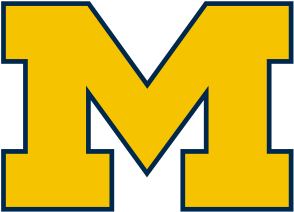
The simplest reason for the wolverine nickname would be that the animal was abundant in Michigan for some time. However, all evidence points otherwise, as there has never been a verified trapping of a wolverine inside the state’s borders, nor have skeletal remains of a wolverine been found in the 96,705 square miles that comprise Michigan. In fact, there had never been a verified sighting of a wild wolverine inside Michigan until February 2004.
The truth is that there is no truly known reason why the Wolverine was chosen as a nickname. However, there are several theories.
The great Michigan football coach Fielding H. Yost had a theory for the nickname, which he wrote about in the Michigan Quarterly in 1944. Yost felt the reason for the nickname concerned the trading of wolverine pelts which occurred in Sault St. Marie for many years. The trading station served as an exchange between the Indians and other trappers and fur traders, who would eventually ship the products of to the Eastern United States. Because many of the furs were in fact wolverine pelts, traders may have referred to them as “Michigan wolverines”, leading to the state nickname and ultimately to the University of Michigan representation.
Eight years later in the Michigan Quarterly Review of 1952, Albert H. Marckwardt presented another theory for the “wolverine” name. Marckwardt’s reasoning is based when Michigan was first settled by the French in the late 1700s. The appetites of the French who made up a sizable portion of the settlers were judged to be gluttonous or “wolverine-like” and therefore, the title wolverines was set upon them.
The last theory surrounds the border dispute between Michigan and Ohio in 1803. While the two sides argued over proper setting of the state line, The Michiganders were called wolverines. It was unclear, however, whether the Michigan natives pinned the name upon themselves to show their tenacity and strength or whether Ohioans chose the name on account of the gluttonous habit of the wolverine. From then on, Michigan was labeled “the Wolverine state: and when the University of Michigan was founded, it simply adopted the nickname of the state it represented.
The Michigan Wolverines is one of the few college sports teams that does not have a mascot, largely for reasons of tradition. In the late 1920s, the Wolverines did have an unofficial mascot – Biff, the Michigan Wolverine. The first Biff was a stuffed wolverine. The second Biff was a live wolverine, who had a companion named Bennie, but the two mustelids grew to became too ferocious to be taken to games, which ended their career as mascots.
Nebraska Cornhuskers
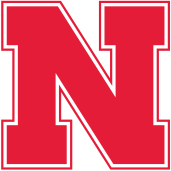
Before 1900, Nebraska football teams were known by such names as the Old Gold Knights, Antelopes, Rattlesnake Boys and the Bugeaters. In its first two seasons (1890-91), Nebraska competed as the Old Gold Knights, but beginning in 1892, Nebraska adopted Scarlet and Cream as its colors and accepted the Bugeaters as its most popular nickname until the turn of the century. Named after the insect-devouring bull bats that hovered over the plains, the Bugeaters also found their prey in the Midwest, enjoying winning campaigns in every year of the 1890s until a disappointing season in 1899.
After its first losing season in a decade, it must have seemed only fitting that Nebraska move in a new direction, and Lincoln sportswriter Charles S. (Cy) Sherman, who was to gain national renown as the sports editor of the Lincoln Star and help originate The Associated Press Poll, provided the nickname that has gained fame for a century. Sherman tired of referring to the Nebraska teams with such an unglamorous term as Bugeaters. Iowa had, from time to time, been called the Cornhuskers, and the name appealed to Sherman.
Iowa partisans seemed to prefer Hawkeyes, so Sherman started referring to the Nebraska team as Cornhuskers, and the 1900 team was first to bear that label.
Of course, the name caught on and became a Nebraska byword, eventually becoming the official nickname for the state.
Michigan State Spartans
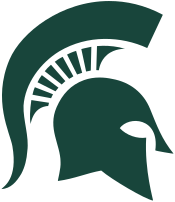
In 1925, the institution changed its name to Michigan State College of Agriculture and Applied Science, and, as an agricultural school, its teams were referred to as the Aggies. Looking to move beyond its agricultural roots, Michigan State held a contest to find a new nickname. They had decided to call the teams the “Michigan Staters”. George S. Alderton, a local sports writer for the Lansing State Journal decided the name was too cumbersome and went through the entries to find a better and more heroic name. He decided on the “Spartans”, but sadly forgot to write down who submitted the suggestion.
Ohio State Buckeyes
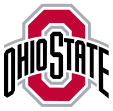
Ohio is commonly referred to as the Buckeye State due to the prevalence of Ohio Buckeye trees within the state’s borders. In 1953, the Ohio legislature designated the Aesculus glabra or the Ohio Buckeye as Ohio’s official state tree. The tree is called the buckeye tree because its nuts resemble the shape and color of a deer’s eye. The buckeye tree is relatively common to Ohio, growing especially well along rivers and streams and in floodplains.
People commonly confuse the Ohio Buckeye with the Aesculus hippocastanum, or the horse chestnut. In addition, the Aesculus octandra, or the Yellow Buckeye, also grows in Ohio. It is closely related to the Ohio Buckeye, and it is difficult to differentiate between the two species.
Besides the state nickname, the Buckeye Tree has also provided Ohioans with other symbols. The Ohio State University has adopted Brutus Buckeye as its mascot. Ohioans have referred to themselves as Buckeyes since at least the presidential election of 1840, when Ohio resident William Henry Harrison won the presidency. Harrison’s supporters carved campaign souvenirs out of buckeye wood to illustrate their support for their fellow Ohioan.
Iowa Hawkeyes

The University of Iowa borrowed its nickname from the state of Iowa years ago. The term “Hawkeye” originally appeared in the novel, The Last of the Mohicans, written by James Fenimore Cooper. In the book, a character named Natty Bumppo is given the word “Hawkeye” as a nickname from the Delaware Indians. Twelve years following the publishing of the book, the nickname was also given to people in the territory of Iowa (the state is now known as the Hawkeye State). Two men, Judge David Rorer and James G. Edwards, sought out to popularize the nickname, and were rewarded when territorial officials gave their approval.
The nickname gained a palpable symbol in 1948 when a cartoon character was created. Later named Herky, it was created by Richard Spencer III. The mascot was instantly popular among fans and gained its name through a statewide contest. A man named John Franklin suggested the Herky name. Since the mid-1950s, Herky has been a fixture at Iowa football games and has played a prominent role in all Iowa athletic events.
Iowa’s primary school colors are black and old gold. The school’s fight songs are “On Iowa!,” the “Iowa Fight Song,” and “Roll Along Iowa.” A fourth song, the “Hawkeye Victory Polka,” commonly referred to as “The Beer Song” or “In Heaven There Is No Beer,” is played specifically following Iowa football and basketball victories
*Information and content from Wikipedia.org

